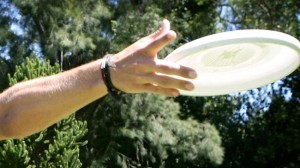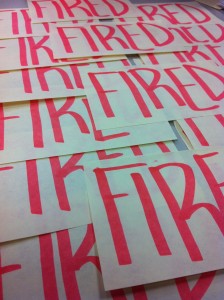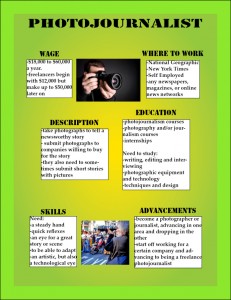Real Game
This was, hands down, my favourite unit to teach. I ran it 1-2 times each week during HCE, and it was basically the “Game of Life” boardgame expanded into lessons. Students were randomly assigned jobs (ex. Hairstylist, Photographer, Doctor) from a set list, and given a job description (ex. wage, vacation time, average day at work, education level, etc.). Throughout the unit, a variety of adult, life-task oriented activities were completed. Some of these tasks were budgeting, taxes, accommodation shopping, and creating resumes.
I think the appeal of this unit, for both myself and the students, lay in its immediate real-world impact. It’s super obvious right from the get-go how important and topical every lesson is, and how students will use/benefit from this information. I loved the amount of discussion this unit triggered, especially among students who might be labelled as “less academic.”
Ultimate Unit
For part of my PE teaching, I ran a week-long unit on Ultimate Frisbee. Since I had four grade 8 classes in my PE block, I would take one class at a time and run through some skills and drills, and some short scrimmages. I tried to focus on leadership while running these lessons; since ultimate has no referees, it falls on players to make sure everyone is following the rules. This is a great opportunity to give specific players, especially some of my less-athletically-inclined players, the chance to be “experts” or feel an increased sense of responsibility or of being involved.
I think inclusion is an important component of PE, and one that is frequently overlooked – especially when we are only playing standardized, team-based, highly competitive sports. For this unit, I loved the emphasis sports places on teamwork, but I didn’t want to focus on the competitive win-lose nature of the game; instead, I tried to also incorporate several skills-based, group tasks, that were less competitive and more completion based in nature.

Remember to use a disc, not a “frisbee” – and to shake that bacon! My Joe-ism: “Sieze the day! Carpe Diem”
Track & Field
I had the wonderful opportunity to coach Long Jump and Triple jump during my practicum this year. I am including it under my pedagogy because of the invaluable lessons I learned about teaching sportsmanship and teamwork. I have been involved in many sports teams and clubs, and I think I have a solid grasp on these concepts, but my coaching experience definitely showed me that there is a difference between modelling and explicit teaching of these character traits.
My co-coach, Mrs. L, created some really great activities for her team that fell outside of a typical skills practice. She had students in her classroom watching videos of jumpers, and then helping each other out with their techniques. She had experienced students from previous years helping out newer students learn how to triple jump, creating a kind of buddy system. It definitely effected the sense of camraderie in a positive way!
Personal Writing
At several points over the course of the year, I had students respond to writing prompts talking about their personal goals, motivations, and social situations. Technically, these were used to assess student achievement in HCE and LA. However, there were several other goals I had in mind when reviewing/assessing these writing pieces.
Firstly, I wanted to get a sense of how each student perceived themselves at the school. Were they comfortable? Happy? Confident? Where did they feel they most strongly belonged?
Secondly, I wanted to get a sense of their interests, goals, and motivations. While I think I had really strong relationships with most of my students, and took time to talk to each of them, it was a really useful resource to have a list of these attributes on hand to refer to.
Lastly, I wanted to use their interests to drive some of our curriculum. A ten week practicum isn’t a lot of time, in the grand scheme of things, nor did I have carte blanche over everything I was teaching….but it was great to make adjustments or leave room for individual choice, where I was able to.
Creative Writing
Predominantly, my creative writing unit centered around short story fiction and poetry. Students learned about and produced a wide range of formats/genres, and wrote on a variety of topics. Students were given a wide range of creative license, with just a few caveates necessary to keep them on track (Rule #1: Only use classmates’ names in a respectful manner… This might mean that they don’t want to be your undead pet pig).
Many of my writing prompts tied into concepts of citizenship; for example, asking students to create ideal societies and compare them to our own, or asking students imagine what communities they might want to be part of when they get to highschool (or after).
I also tried to incorporate some digital citizenship into my creative writing unit. Digital citizenship is something I feel really strongly about, especially when it comes to positively role modelling social media use for our students. However, during my practicum, my teaching team did not use it, and I felt discouraged from using it in our classroom. In the future, I would like to remedy this by giving students access to my professional twitter, instagram, and tumblr feeds.
I did conduct several lessons on digitial citizenship concerning online presence and impact, and discussing with students a variety of online communities that they could participate in. These were all connected to youth creative short story writing, and included the following sites:
Students were not assessed on participation on these boards, but I gave a quick introduction to several groups of interested students on how to sign up for them. Feedback provided online was (anonymously) used in class to compare and contrast effective critique versus poor critique. In the future, I think I would like to incorporate the idea of a creative writing blog or joining a website to post stories as a mandatory fixture in my classroom.
Literary Circles
Literature Circles (LCs) are something that my SA had introduced at the outset of the year. However, I found some of the discussion lacked depth, and there wasn’t a lot of accountability for the students – they spoke when a teacher was there, but were off task when a teacher was away.
I made several changes to the literature circles, including modelling small group discussions for the class and adding a peer assessment component. I also had students write reflections on what kinds of questions they think would be important to have on a test – both multiple choice, short answer, and short essay, and I used student responses to create my tests.


